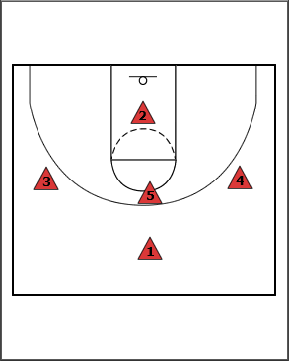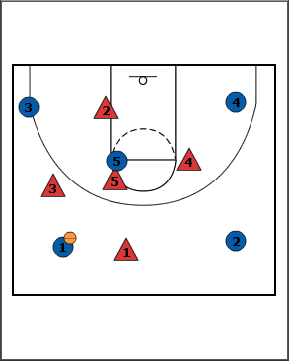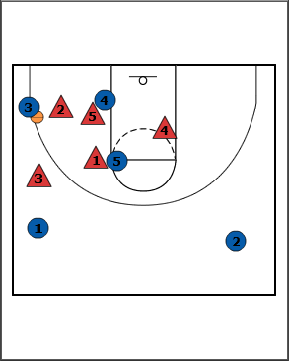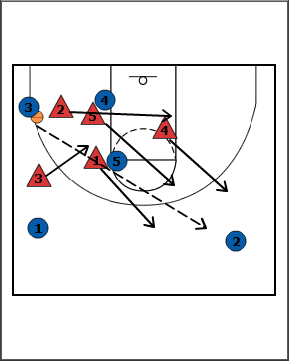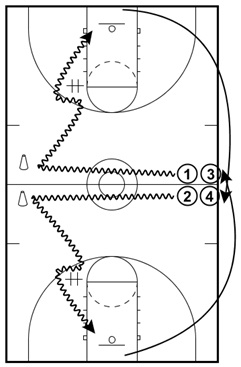I was introduced to this style of defense in junior high and instantly fell in love with it. It was my absolute favorite zone defense to run. I should probably tell you that a zone defense is when the defenders do not guard or follow a specific player around rather stay in their own "zone of the court and defend any player who comes into or close to their zone. Zone defense isn't used as much in higher levels of the game but is often used to throw the other team for a loop.
So I as I mentioned before, the 1-3-1 refers to where the defenders are placed on the court and looks like this.
I am not a great basketball mind so I would like to use pictures from the post on Breakthrough Basketball, 1-3-1 "Lob Pass" Zone Defense, to illustrate different scenarios in this defense. So if you would like a description what each player is doing during each scenario, please click on the second link above to read the post.
Ball on the Wing:
Ball in Corner:
Skip Pass to Opposite Wing:
One of the main points of this defense is to try and get the offense to comment turnovers when they are attempting to skip pass or lob pass the ball around the court. One of my favorite aspects not covered in the original post is that this defense allows coaches to trap players at various points during the different scenarios. Trapping is when a single ball handler is guarded by two players, also known as a double-team. For example in scenario one, ball on the wing, players 1 and 3 can trap the ball and try to force a turnover. It is important to note that trapping leaves one player unguarded and can be problematic if players are not familiar with rations of the defense so it may be more beneficial to play this defense straight up and incorporate trapping and rotating later on after players have developed a firm grasp of this defense.
Once again credit for the photos goes to Breakthrough Basketball.
